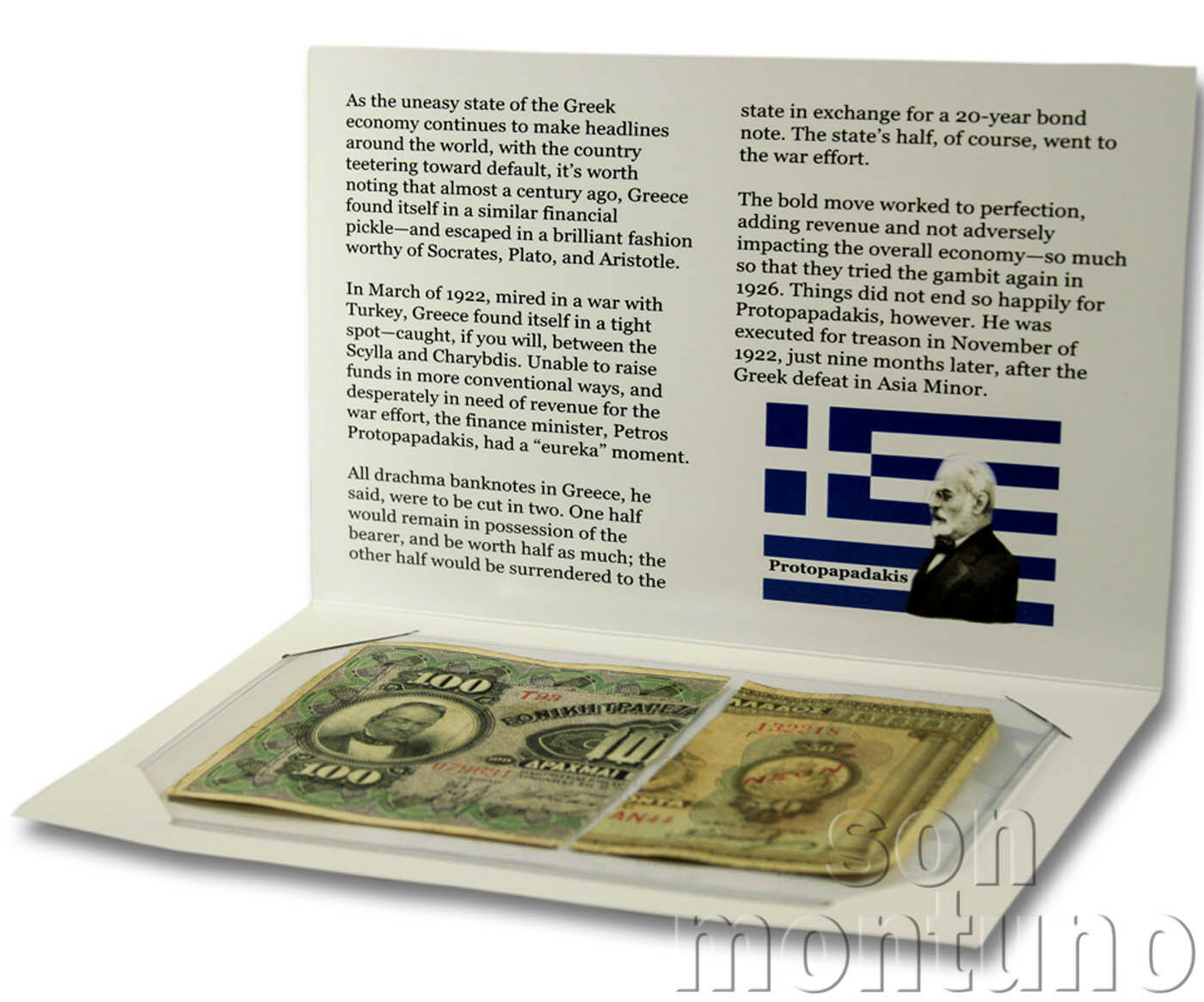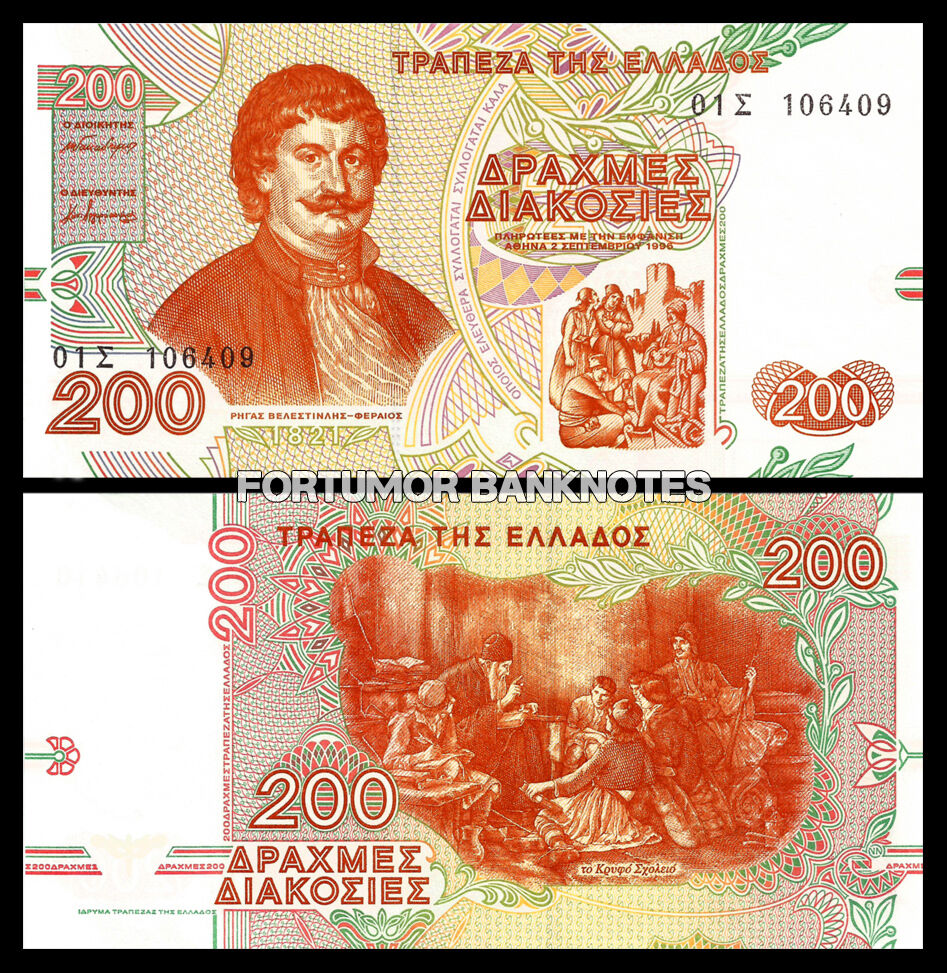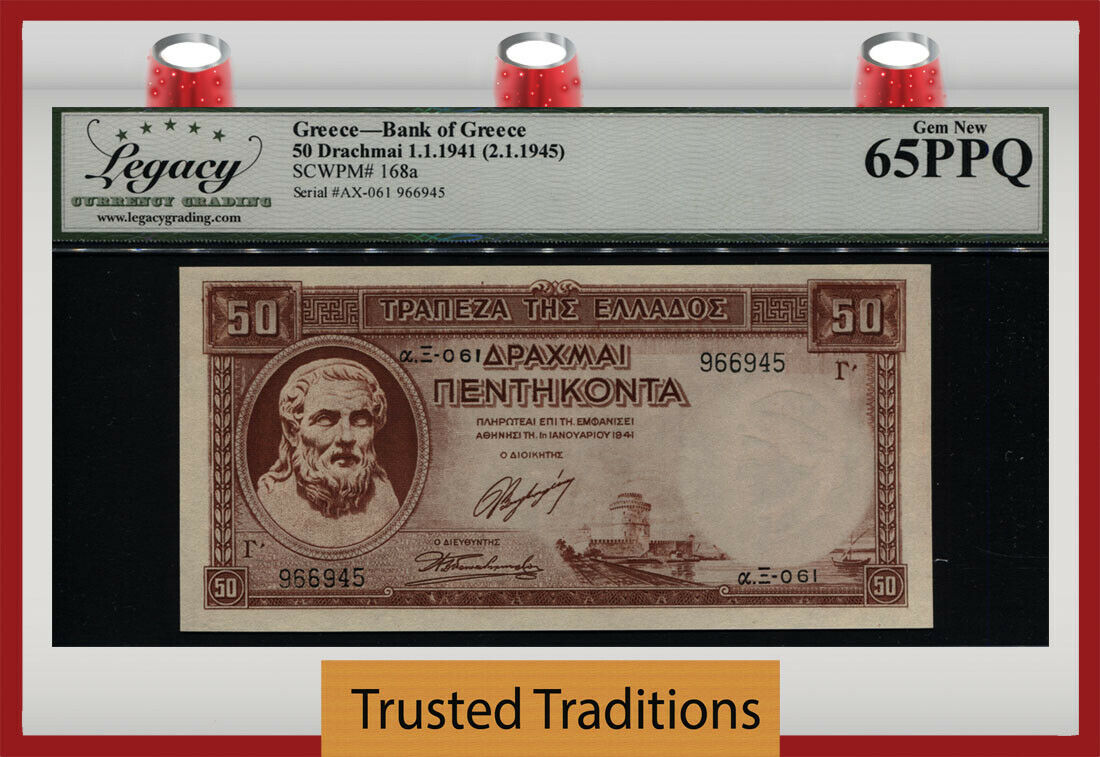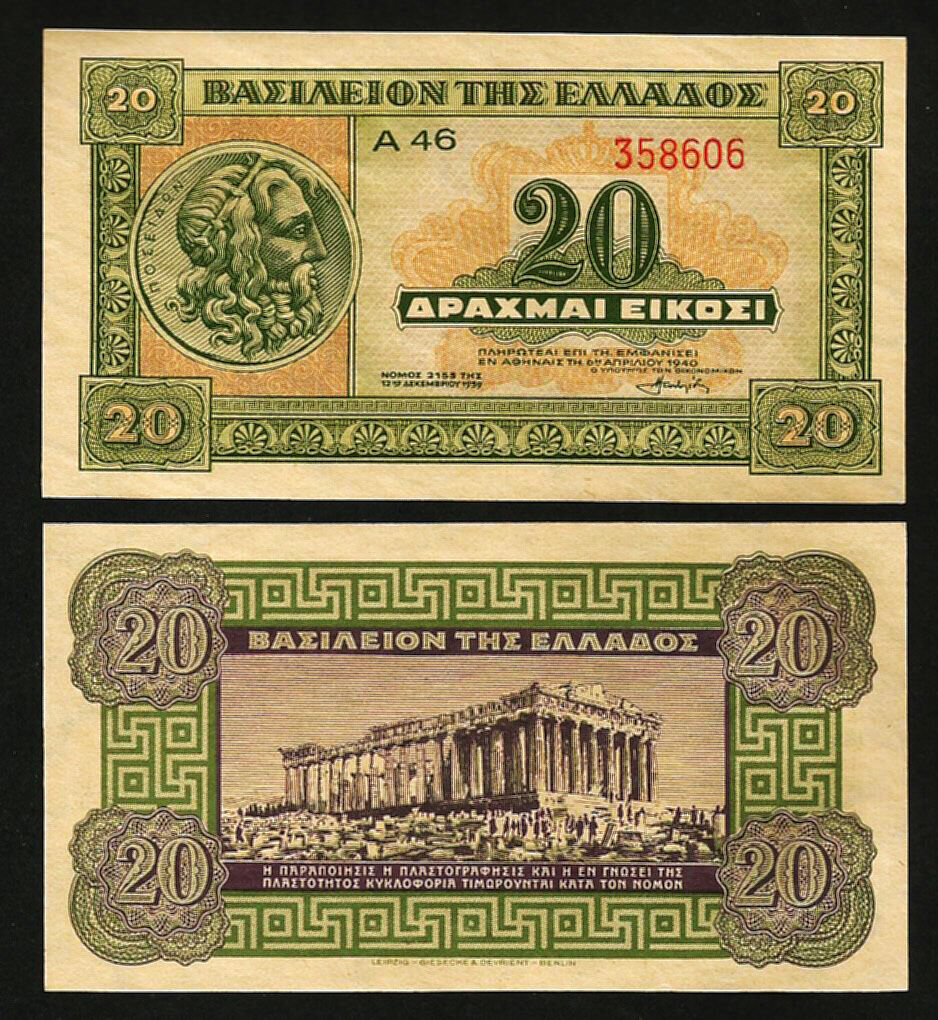-40%
GREECE WANTS TO CUT ITS BILLS IN HALF? Government Torn War Era Drachma Banknotes
$ 10.29
- Description
- Size Guide
Description
GREECE WANTS TO CUT ITS BILLS IN HALF?It Wouldn't Be The First Time
Government Torn War Era Drachma Banknotes
Image shows typical notes, not to scale and is for illustration purpose only. Actual notes will vary.
PERFECT GIFT!
Half off! These banknote halves are tangible proof of one of the more creative ways a sovereign nation has ever raised revenue. At the time, Greece was at war, and needed to fund the war effort.
As the uneasy state of the Greek economy continues to make headlines around the world, with the country teetering toward default, it’s worth noting that almost a century ago, Greece found itself in a similar financial pickle—and escaped in a brilliant fashion worthy of Socrates, Plato, and Aristotle.
In March of 1922, mired in a war with Turkey, Greece found itself in a tight spot—caught, if you will, between the Scylla and Charybdis. Unable to raise funds in more conventional ways, and desperately in need of revenue for the war effort, the finance minister, Petros Protopapadakis, had a “eureka” moment.
All drachma banknotes in Greece, he said, were to be cut in two. One half would remain in possession of the bearer, and be worth half as much; the other half would be surrendered to the state in exchange for a 20-year bond note. The state’s half, of course, went to the war effort.
The bold move worked to perfection, adding revenue and not adversely impacting the overall economy—so much so that they tried the gambit again in 1926. Things did not end so happily for Protopapadakis, however. He was executed for treason in November of 1922, just nine months later, after the Greek defeat in Asia Minor.
The notes:
Greece:
- P61, 10 drachmai
- P80 (66), 50 drachmai
These are two genuine Greek half-notes. The first, P-61, is the left half of a 100 drachmai note originally issued in 1905-17, and torn in half in 1922. The portrait is of the famed revolutionary Georgios Stavros, founder of the National Bank of Greece; on the back, the denomination is given as “100 francs.” The second, the 50 drachmai P-80, is a subsequent issue; the word NEON on the front means new.
SEE OUR OTHER BANKNOTE COLLECTIONS AND SINGLES
RIGHT HERE
and please see our other listings for more great coins & treasures
WHEN YOU CLICK THIS LINK
Thank You!










